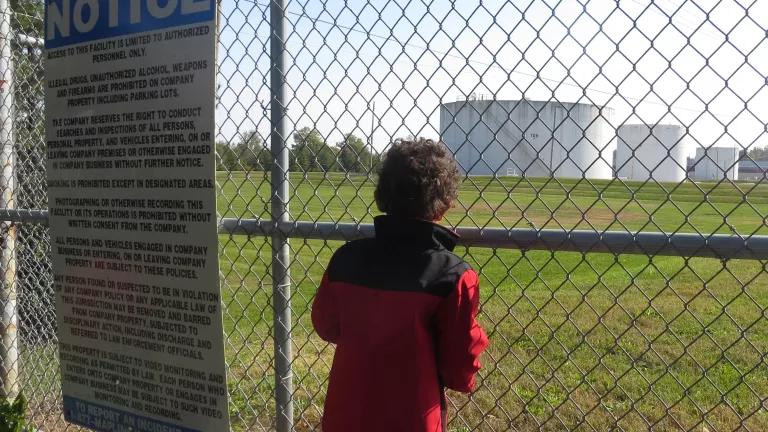Flea Collar Chemicals Are Poisoning Kids and Pets
NRDC action has prompted PetSmart & Petco to stop selling flea collars that can harm pets and the developing brains of young children. The EPA and other retailers should act swiftly to prevent further harm.

All of us want to keep our children and pets safe. So, what do we do when EPA allows the sale of products that jeopardize the health of our kids and pets across the country?
Nearly two-thirds of people in the U.S. own pets, and 95% of pet owners consider their pets to be members of the family. So, it’s no surprise that consumers were shocked in March when they learned that nearly 1,700 pets had died from exposure to pesticides in Seresto flea collars, which are sold across the country. The EPA received 75,000 incident reports documenting pet harms associated with the collars, according to documents uncovered in a USA Today study with the Midwest Center for Investigative Reporting, yet did nothing to protect pets. Unfortunately, Seresto collars aren’t the only dangerous flea collars.
But here’s some good news: some retailers are protecting pets and their families. Petsmart (the nation's largest pet retailer), under pressure from NRDC, has stopped selling products containing another dangerous pesticide, tetrachlorvinphos, (TCVP) in its retail stores and on its website. And Petco, the nation's second-largest pet retailer, has followed suit. Petco officially ended all sales of flea collars containing TCVP in March.
But the danger to consumers and pets still lurks in other major outlets, including Walmart and Target, grocers including Kroger, Albertsons & Giant, pharmacies including CVS Health and Rite Aid, and online retailers like Amazon, which all continue to sell flea collars containing tetrachlorvinphos where these collars are sold under the brand names Hartz, Zodiac, and Adams.
When used as intended, these products are designed to leave pesticide residue on a pet’s fur to kill fleas and ticks. However, that residue can rub off on anyone who pets the animal, and objects the pet comes into contact with, such as furniture and bedding. And young children, whose developing brains are most at risk from TCVP, can absorb the pesticide not only through their skin, but by ingesting it since they put their hands in their mouths a lot. A 2009 NRDC report, and EPA’s own assessment under the Obama administration in 2016, found that normal use of a TCVP collar left enough residue on pets’ fur to pose neurological risks to toddlers’ developing brains.
Organophosphates are a particularly dangerous family of pesticides. They’re known to damage the developing brains and nervous systems of young children, toddlers, and fetuses. The use of TCVP in pet flea collars is the last remaining residential use of this toxic family of chemicals; six other dangerous organophosphates once used in pet products have been removed from the market.
It is time for the EPA to stop allowing a pesticide that threatens the health of kids on pets. And while we continue to hold EPA accountable to the science through the courts, responsible retailers need to follow the lead of PetSmart and Petco and remove these dangerous products from their store shelves and their websites.
We haven’t waited for courts to act or for the EPA to do its job and protect consumers. NRDC has launched market campaigns to educate major retailers about the dangers associated with TCVP, and to inform the public about the hazards to children and pets that are lurking in the flea collars sold on store shelves and retail websites.
Parents and pet owners cannot wait another decade.



